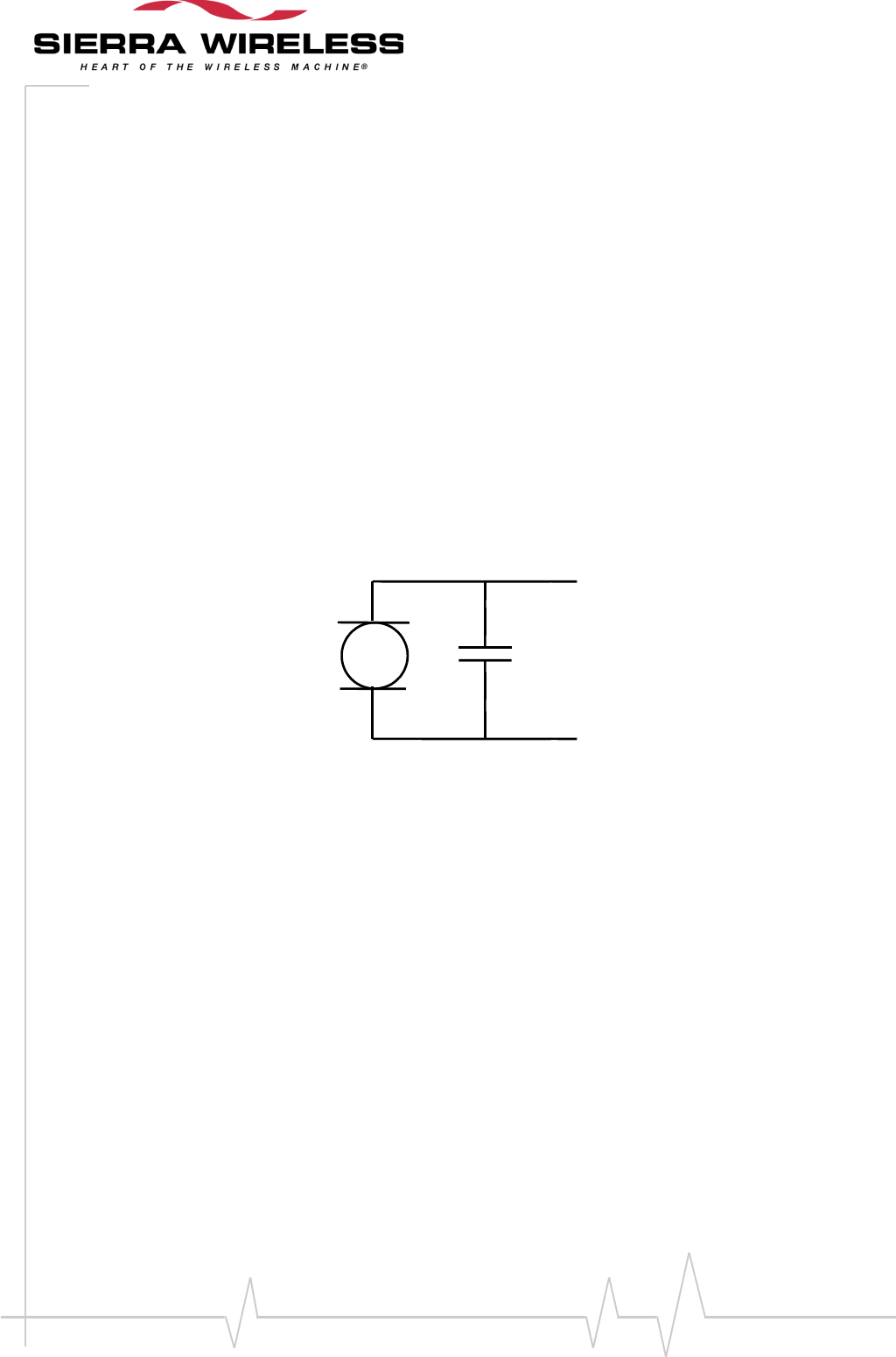
WA_DEV_W218_PTS_002 Rev 005 Page 57 of 109
Product Technical Specification &
Customer Design Guidelines
It is important to select an appropriate microphone, speaker and filtering components to avoid
TDMA noise.
Recommended Microphone Characteristics
The impedance of the microphone has to be around 2K.
Sensitivity is from -40dB to –50 dB.
SNR > 50 dB.
Frequency response is compatible with the GSM specifications.
To suppress TDMA noise, it is highly recommended to use microphones with two internal
decoupling capacitors:
CM1=56pF (0402 package) for the TDMA noise coming from the demodulation of the
GSM900 frequency signal
CM2=15pF (0402 package) for the TDMA noise coming from the demodulation of the DCS
frequency signal
The capacitors have to be soldered in parallel to the microphone:
CM
Figure 21. Microphone
Recommended Speaker Characteristics
Type of speakers: Electro-magnetic /10mW
Impedance: 8 for hands-free
Impedance: 32 for heads kit
Sensitivity: 110dB SPL min
Receiver frequency response is compatible with the GSM specifications.
Recommended Filtering Components
When designing a GSM application, it is important to select the right audio filtering components.
The strongest noise, called TDMA, is mainly due to the demodulation of the GSM900 and DCS1800
signal: A burst is produced every 4.615ms; where the frequency of the TDMA signal is equal to
216.7Hz plus harmonics.
The TDMA noise can be suppressed by filtering the RF signal using the right decoupling components.


















